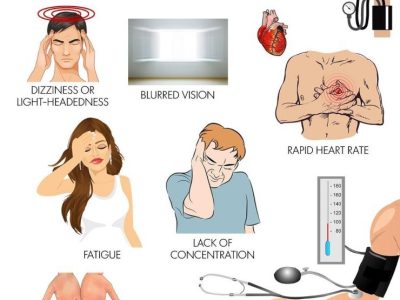Blood pressure varies naturally throughout the day. Clinically low blood pressure may result from a temporary issue, such as dehydration, or a more long-term one, such as a heart condition.
Low blood pressure may be genetic or occur as a result of aging. In some cases, a temporary factor, such as pregnancy or dehydration, is responsible. In others, low blood pressure results from an underlying disease or a severe reaction.
In many cases, changing dietary habits may be enough to treat temporary causes of low blood pressure. Alternatively, a doctor may prescribe medication or change an existing treatment plan if it is likely responsible for this symptom.
Anyone with symptoms of low blood pressure, such as dizziness and fatigue, should receive medical attention.
Below, learn what counts as low blood pressure, what underlying factors may be at play, and what the treatments involve.
What is low blood pressure?
The heart pumps blood around the body, continuously delivering oxygen and other nutrients. Blood pressure refers to the force of blood pushing against the artery walls as the heart pumps.
In a person with low blood pressure, blood flows through the veins and arteries with too little force.
Doctors use two figures to denote blood pressure. The first refers to systolic blood pressure, which is the force of the blood against artery walls when the heart beats. The second refers to diastolic blood pressure, which is the force of the blood when the heart rests between beats.
Healthcare professionals measure blood pressure readings in millimeters of mercury (mm Hg). A normal reading is less than 120 mm Hg systolic and 80 mm Hg diastolic, which doctors write as “less than 120/80 mm Hg.”
The National Heart, Lung, and Blood Institute define low blood pressure as under 90/60 mm Hg.
It is possible to have low blood pressure without any symptoms. However, some people with this issue may experience:
- weakness
- fainting
- dizziness
- tiredness
- nausea
- dehydration
- trouble concentrating
- blurred vision
- cold, clammy skin
- depression
- rapid, shallow breathing
Causes
Many factors affect blood pressure, including the time of day and a person’s physical activity levels and diet. Blood pressure also declines with age, and some people have naturally low blood pressure due to genetic factors.
Temporary causes
A person’s blood pressure may be lower than usual due to:
- eating
- straining
- long periods of inactivity, such as bed rest
- dehydration
- pregnancy
Some temporary causes, such as pregnancy, resolve on their own. Others may require dietary changes and other care or management strategies.
More serious or lasting causes
Some potentially more severe health issues can also cause low blood pressure, including:
- Nutrient deficiencies: These might involve vitamin B12 or folic acid.
- Neurally mediated hypotension: This disorder causes a drop in blood pressure after the person has been standing up for a prolonged period.
- Endocrine problems: These affect the regulation of the body’s hormones. One example is hypothyroidism, also known as an underactive thyroid.
- Heart problems: These can limit how effectively the heart pushes blood around the body.
- Septic shock: This is a potentially life threatening response to a severe bacterial infection.
- Anaphylactic shock: This is a potentially life threatening complication of anaphylaxis, which is a severe allergic reaction.
In addition, loss of blood due to an injury can lead to low blood pressure.
Drug-based causes
Low blood pressure may sometimes result from alcohol use or the use of certain medications, such as:
- diuretics
- hypertension medications
- heart medications, such as beta-blockers
- antidepressants
- erectile dysfunction medications
- medications for Parkinson’s disease
Treatments
To address low blood pressure, a doctor may adjust the dosage of an existing drug or recommend medications to increase blood pressure. Medications that they may prescribe include fludrocortisone and midodrine.
Also, a person may benefit from:
- drinking more water throughout the day
- avoiding alcohol, which can cause dehydration
- eating more healthful, high sodium foods
- drinking tomato juice or sports drinks
- wearing compression socks that extend to the thighs or waist
- moving the legs to stimulate blood flow before getting out of bed
When to contact a doctor
Low blood pressure symptoms can disrupt daily life, and they generally become more serious with age.
It is important to contact a doctor if any of these symptoms, such as dizziness and fatigue, occur. A doctor can identify the cause and recommend the best treatment approach.
People experiencing any specific signs of anaphylactic or septic shock require emergency care.
Signs of anaphylactic shock include:
- a rash
- diarrhea
- congestion
- breathing difficulties
- fainting, dizziness, or confusion
- swelling of the mouth, tongue, throat, or lips
- trouble swallowing
Some signs of septic shock include:
- symptoms of an infection, such as diarrhea, vomiting, or a sore throat
- shortness of breath
- a fever
- shivering
- sweaty or clammy skin
- extreme discomfort
- a high heart rate
- confusion or disorientation
Summary
Low blood pressure refers to the blood circulating with a low level of force. It can cause a range of symptoms, including dizziness and nausea.
Blood pressure naturally fluctuates throughout the day, and it declines with age. Longer lasting low blood pressure may result from a temporary issue, a chronic illness, or an emergency, such as septic shock.
Anyone who has persistent symptoms of low blood pressure should consult a doctor. Anyone experiencing a sudden, significant drop in blood pressure should receive urgent care.


 How To Cancel Out Negative Effects Of Pollution On Blood Pressure?
How To Cancel Out Negative Effects Of Pollution On Blood Pressure?
Leave a Reply